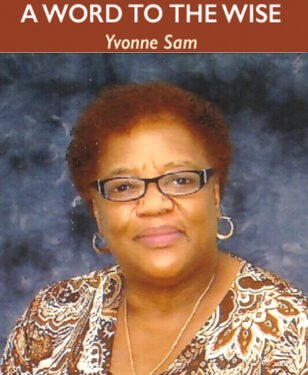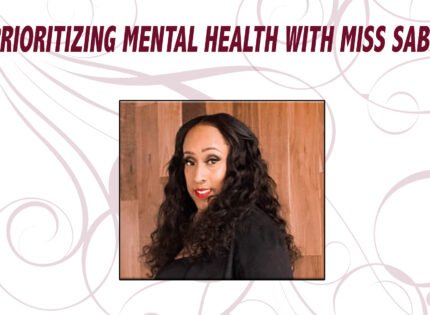 Parents be wary about the school “label” that says your child is not learning capable.
Parents be wary about the school “label” that says your child is not learning capable.
As a retired adherent of the pedagogical profession especially at the secondary school level, I had put to rest some practices that were rife during my active years.
However, my recent exposure to classroom teaching and parental involvement jolted me back to a negative entity still existing within the Black community… school-imposed labeling.
The practice of labeling in schools– particularly when describing a student’s academic ability, behavior or character– is not new, and is considered innocuous.
The label indicates that the child is not learning capable, and in the majority of cases the child works to fit the title, accepting it as am earned badge of honor.
In part, labels offer a brief description for the purposes of identification to indicate an abbreviated, yet symbolic message to others about whom the label is affixed.
Nevertheless, these labels morph into permanent markers that are attached to an individual– your child.
The initial premise was that categorical identification would give way to the development of individualized education programs to specifically address the student’s disabilities.
I think that whatever good intentions may have been present, once the child is labeled, the extra baggage that comes with it may be a load too heavy for them to carry.
From the outset the very term disability implies a deficit mode of thinking about the labeled student.
The prefix “dis” is a derivative of the Latin word meaning “not” or “without” hence the term disability literally defined means not having ability.
The sociolinguistic implications of this term, when combined with the word learning, suggests not having the ability to learn.
An assigned label essentially places the individual into a specified group possessing similar characteristics.
Additionally, by design a label can serve the discriminatory purpose of
differentiating the individual, in this case the student from the rest of the class, and also provide information about the student regardless of its accuracy.
To better situate the problem, Howard Becker’s classic labeling theory contends that labels influence the perceptions of both the individual and other members of society. Once the majority members of a society have decided that certain behaviors are outside of the societal norm any individual displaying such behaviors are considered deviants, or in the case of the classroom “Special-Ed” or “learning disabled”.
Not unheard, but there is power in words. Ultimately labeling someone reinforces that behavior in the person labeled, and in time the individual’s behavior begins to reflect the label. Labeling creates a self-fulfilling prophecy.
Also biases, prejudices, and stereotypes may affect how the labeler responds to the person labeled.
Concerns notwithstanding, special education remains an integral part of the Canadian educational system, and the procedures for implementation of programs and the requisite labeling of students is prescribed by law.
Biases may also influence the process of labeling.
For example the first step, referral necessitates that the teacher or other school personnel
Identify any student presenting characteristics suggestive of a disability.
It should also be noted that once a disability is suspected, remediation should be put in place with the student in order to determine the student’s response to the intervention.
While guidelines are stipulated for the identification of relevant characteristics, the teacher has to make a determination based on his or her observation(s). It is therefore possible that biases may affect the teacher’s referral.
A referring teacher who is a member of a majority group or mainstream culture will certainly see things through a different lens.
When such an occurrence takes place, the Black student who might learn differently because of his cultural influences, is at risk for misidentification, misclassification, misplacement and ultimate mis-instruction.
At The Heart of the Labeling Start
For Black children labeling can begin the moment they set foot in the classroom. In addition to possible racial challenges to their racial identity.
Rather than utilize a culturally responsive pedagogy that would take advantage of the cultural competencies the student brings to school, teachers are left to depend on the traditional mainstream approach to instruction.
When the students do not conform to the “norm” they are at risk for a label.
Another situation that may be seen as counterproductive arises when for example, many Blacks come from a very active home environment where they are very much involved with older siblings and relatives talking and playing.
Much of their activities include cooperative experiences of sharing and helping each other. Some may not be accustomed to remaining in a seat and not talking to anyone while the teacher is writing on the board.
On account of entering school unprepared for the restrictions of the classroom their behavior may be regarded as outside the norm and often misinterpreted as a behavior disorder.
Labeling these students will not eradicate the cultural differences in their behavior , nor facilitate adaptation to an unfamiliar environment.
So, the greatest danger of labeling lies in what happens as a result of the process. Get this straight, for the Black child any label in the school is one too many labels to carry. Labeling is disabling, and it enables some to remain in the placed order and strive no further.
Learned and encouraged helplessness.
Children believe what they are told, and the belief that one cannot complete school work without the assistance of someone else is a common phenomenon among students who have been labeled with a disability, and the self-image begins to reflect the label. The compounding impact is severe given the history of other denigratory labels Blacks have had to suffer in Canada.
Parents, allow me this to say———-Put away the label, work with your son/ daughter and show that he/ she is capable .
Let the label eventually prove to all that from the outset it was a false call.
Aleuta continua — The struggle continues.















